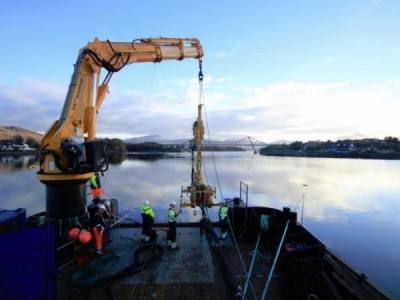
Posted on August 13, 2020
A new rock anchoring technology developed in the marine renewables industry could have cross-over potential into aquaculture.
For the past year, tidal energy technology specialist Sustainable Marine Energy Ltd (SME); the University of Dundee; marine equipment supplier, Gael Force Group; and the Scottish Aquaculture Innovation Centre (SAIC) have explored the feasibility of adapting a rock anchor approach from techniques used in marine energy sites to aquaculture.
With additional support from software provider Optum, the initial testing phase has been successfully completed and the results will allow the group to accurately predict the loads and capacity that rock anchors can bear in field trials. The findings will also enable SME to reduce the amount of material required to manufacture the anchors, leading to a more cost-effective and environmentally friendly product.
While traditional gravity and drag anchors made of concrete or steel are suitable for existing fish farming sites, the new technology could support the deployment of aquaculture sites in more remote, higher energy locations. The anchor forms a mechanical ground lock with the rock seabed without the need for resin or grout, and the reduction in weight also allows operators to use modestly sized, readily available vessels for deployment.
When fully developed, adoption of the new anchoring technology could allow fish and shellfish farms to look at areas which are currently unusable. Locating operations in deeper, higher energy waters could help to reduce a range of health and wellbeing risks for aquaculture species, while also increasing the industry’s capacity, by allowing the development of larger farms with a lower environmental footprint.
The group is now looking for an aquaculture partner to trial the new anchors at a fish farm, progressing towards a full-scale deployment.
By Jake Frith
Source: maritimejournal





